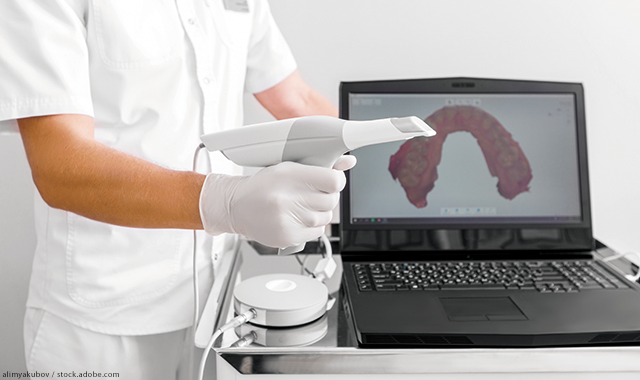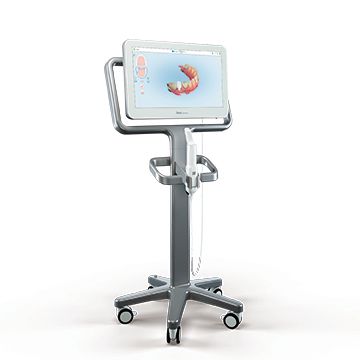Let's get digital: How digital technology has taken the dental industry by storm
Digital technology has taken over the dental industry - and it's critical to jump on the digital train.

The idea of being digital in pretty much all aspects of our practices has been around for a while now. Heck, I began moving toward a totally digital workflow in the late ’90s. Back then it was a lot more difficult than it is now. On top of that, there were a lot of systems that weren’t digital and wouldn’t be for several years. Consequently, even if your goal was a completely digital office, the solutions weren’t always available.
The good news is that those systems that stood in the way have been pretty much eliminated by the tsunami-like wave of technological expansion our society has created over the last several years, and one of those systems is digital impressions.
While the idea, and actual usage, of digital impressions has existed for more than 30 years now, the last five years or so have seen tremendous improvements in these systems followed by an expanding market penetration.
Originally the digital impression market was a tiny niche composed of not early adopters but innovators. According to Everett M. “Ev” Rogers, “Innovators are the first individuals to adopt an innovation. Innovators are willing to take risks, youngest in age, have the highest social class, have great financial lucidity, very social, and have closest contact to scientific sources and interaction with other innovators. Risk tolerance has them adopting technologies, which may ultimately fail. Financial resources help absorb these failures.”
Trending article: 5 surprising ways digital tools can boost your abilities
These are the people who are willing to stand right on the edge and love gadgets more than life itself. This small but strong-minded community had one choice, CEREC, and that choice dominated the market and their thoughts for over 15 years.
Those 15 years were basically all about CAD/CAM, and so were the next few years to follow as D4D entered the market with the E4D system, which was a close competitor to CEREC. Both systems consisted of an acquisition unit with a PC and a milling unit that created restorations from blocks through subtractive processes. The systems were fairly capable of creating clinically acceptable restorations but didn’t always make the grade. Also when, on occasion, cases went off the rails, they went way off the rails.
Many doctors I spoke with back then said that basically when the systems worked, they worked well, but occasionally it seemed that no matter how hard one tried, there were certain cases that produced unacceptable results no matter what the doctor did. These cases resulted in doctors taking traditional impressions and a bit of disappointment in the technology by both doctor and patient.
Trending article: The future of digital dentistry

However, as all good technology does, improvements in processing, software and optics pushed the technology further than ever before. Camera hardware evolved to a point of allowing true 3D rendering, powder was eliminated, and the design software made creating restorations so easy that a doctor could easily train an auxiliary to do it in a few short hours.
As the technology became more predictable, the only hesitation point for many doctors was workflow. Many offices didn’t want to design the cases and/or spend the necessary time for milling. There was also the aspect of finishing the restorations. While some offices chose to polish the restorations, others wanted stain and glaze. This, of course, created added time to fire the porcelain in an oven, which became a requirement when lithium disilicate came on the market.
Digital impression and scanning systems have gotten smaller and more mobile for easier use. The 3M Mobile True Definition scanner operates off of a tablet that can be mounted or held and is easily transferable between operatories.

Lots of offices saw the advantages of the imaging/acquisition part of the technology but didn’t want to be saddled with design, milling and, in many cases, firing in an oven.
I was a CEREC user in the early 2000s and once in a meeting with Sirona I suggested adding a network connection to the acquisition unit to allow the doctor to send the case digitally to a lab. More doctors would buy the technology, I explained, if there was an option to use a lab and maintain the “impression and send” workflow offices were used to. When the laughter died down, I was told that the advantage of CAD/CAM was the total in-office solution.
More from the author: How new technology will impact treatment planning
Fast forward to the current day and we can see that the idea of using acquisition units as impression units has taken a firm hold in the industry. Starting in about 2006, the industry began to see inroads being taken by companies that were supplying the impression part of the solution. It was in 2003 that a small startup with MIT geniuses at the helm incorporated Brontes Technologies to produce a highly accurate 3D chairside scanner. In 2006 Brontes was purchased by 3M and the product called the COS (Chairside Oral Scanner) entered the market in 2007. At the time, I found it intriguing that a company that sells more impression material than any other company had just paid $96 million to disrupt that very same impression material business. I knew things were going to change.
Next: The changes that hit the industry
At first the systems had large cameras, their software interfaces were a bit clunky, and they were run by full-sized PCs that required large, semi-heavy and bulky carts that had to be moved around. But the advancements came at a fast and furious pace. While initial designs required a slow process of multiple photos from different angles taken one at a time with a foot pedal interface, those were fairly rapidly replaced by smaller wands that, once initiated, began to take images on their own. The large footprint carts that housed full-sized desktop PCs were rapidly replaced by laptops and tablets. Portability became the norm.
Once the hardware became small, portable and predictable, the software quickly evolved. The systems had originally stitched manually taken individual pictures together. Suddenly pictures were being taken automatically as the camera wand passed over the teeth. Areas without enough data were indicated and could be “filled in” simply by passing the wand over the target area again. The scans were upgraded to color and filled in in real time. What once had required 15-20 minutes for a single crown was now completed in less than five minutes … and with exponentially better quality.
More from the author: What the future holds for digital dentistry
The latest from Align Technology, the new iTero Element 2 scanner has updated visualization tools and chairside milling integration to streamline restorative and orthodontic workflows.

Then orthodontic scanning entered into the mix. The smart folks at Align Technology (parent of Invisalign) discovered that digital dual-arch scans had much higher accuracy and less distortion than even the best polyvinyl siloxane impressions. Their purchase of iTero soon followed.
What we’re now seeing is what I like to refer to as the “Integration Phase.” We’ve seen this before as practice operating software systems began to interface with digital radiography, digital imaging and digital charting. Now we’re seeing chairside digital impressions being used for multiple clinical outcomes.
In my practice we’re using digital scans for any type of fixed prosthetics, Invisalign, study models and recently removable prosthetics. All of this information is stored in the cloud, which allows the office to simply have a new model printed if required. That greatly simplifies things.
Related reading: The latest advancements in digital dentistry
As research and development continue, we’ll obviously see more improvements. Things such as deep subgingival margins and removable prosthetics with rest seats that involve the target tooth will be conquered. Both of those situations currently require traditional analog impressions. However, the future for this technology is bright. We’re very rapidly approaching the tipping point where this field will move from “Early Adopters” to “Early Majority” on Rogers’ “Innovation Diffusion” scale. I can still clearly remember a lecture from the late ’80s while I was in school. An instructor described the concept that would become CEREC, though at that time he didn’t even know its name. The reason I can still remember it is that he stated that perhaps at some point in the future the need for impressions would be a thing of the past. When I heard that I thought, “I’d love to have one of those things,” and I’ve pretty much been a technophile ever since.
If you’re not currently using a digital impression system, I truly feel you owe it to yourself to check them out. I went into the technology with good but not great expectations. However, I’ve now become dependent on it and I’m a true believer in digital’s ability to save time, internally market, decrease stress and provide better patient outcomes. In my book, this is a must-have technology. If you haven’t made the jump yet, you should.